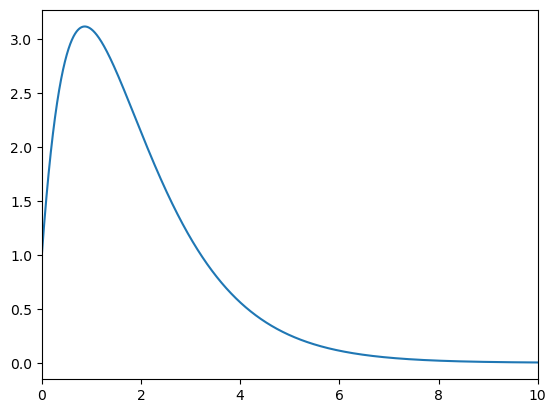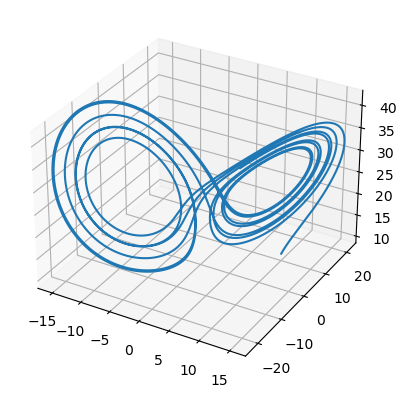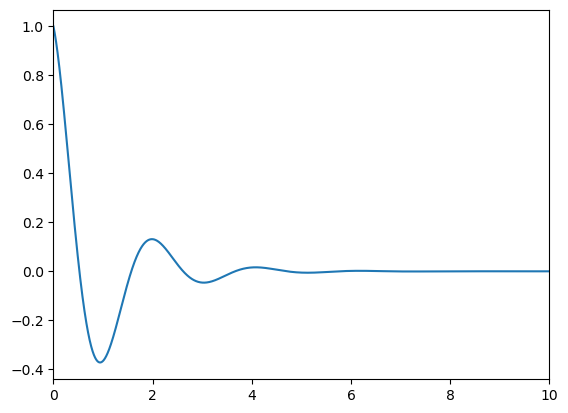Chapter 4 exercise
Contents
Chapter 4 exercise#
Question 1#
Using the eulerf function that was defined in the notes:
def dxdt(t,x):
return -x+np.exp(-(t-2))
t,x = eulerf(dxdt,1,[0,10])
plt.plot(t,x)
plt.show()

If you wish to compare, the analytic solution is given by
\[\begin{equation*}
x=t e^{-(t-2)}+e^{-t}
\end{equation*}\]
Question 2#
def dxdt(t,X,p,s,b):
x,y,z=X
dxdt=s*(y-x)
dydt=x*(p-z)-y
dzdt=x*y-b*z
return np.array([dxdt,dydt,dzdt])
X0=[10,10,10]
t,X = eulerf(dxdt,X0,[0,10],p=28,s=10,b=2.667)
x,y,z=X.T #Extract the columns as variables
ax = plt.figure().add_subplot(projection='3d')
ax.plot(x, y, z)
plt.show()

Question 3#
def dxdt(t,X):
x,y=X
dxdt=y
dydt=-2*y-10*x
return np.array([dxdt,dydt])
X0=[1,-1]
t,X = eulerf(dxdt,X0,[0,10])
plt.plot(t,X[:,0])
plt.show()

